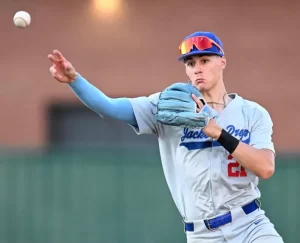Rethinking how to evaluate the draft
For the most part, draft picks go somewhat close to the order that most teams value them.
Or, at least that’s how it used to work.
The rule limiting teams to a signing bonus pool based on the value of their picks in the first 10 rounds has altered the way teams draft. The change was implemented in 2012 and teams seem to be getting a handle on how to use the system to their advantage in its second year.
Take the Kansas City Royals, for example. They drafted Hunter Dozier at No. 8 overall, who was considered a reach and signed for more than $900,000 under the slot bonus for that pick. In the second round, the Royals took Sean Manaea, a pitcher that likely would have gone in the top five if not for a hip injury. The idea was that the savings from Dozier allowed them to take a gamble on Manaea.
In other words, they played the system to try to get “two legitimate first-round picks” as Art Stewart, the Royals’ senior advisor to general manager Dayton Moore, said in a Kansas City Star article.
Bringing this around to the White Sox, it’s clear they did some maneuvering of their own in some of the early rounds. The first four picks all signed for approximately slot bonuses, but after that it gets more complicated.
High schooler Thaddius Lowry signed for $90,800 over slot in the fifth round. In the sixth, ninth and tenth round picks the Sox selected college seniors that they knew they could sign for cheaper bonuses.
Those cheaper bonuses allowed the Sox to throw more money at seventh rounder Trey Michalczewski, a high school infielder that had a college commitment to Oklahoma and was regarded as a third-round talent. The Sox signed him for $500,000, which is late third-round money.
The Sox found a way to get some extra talent while still sliding in under their bonus pool. The take away is that snap reactions to players taken while the draft is still ongoing, which were never really fair, don’t apply anymore. You have to look at the players drafted, and more importantly the players signed, in the draft as a whole and determine if it appears the team got good value.
Over slot draft signings are nothing new, but the method to make them happen has changed dramatically. It’s all about allocation of assets instead of spending as much money as a team has the ability to do.






